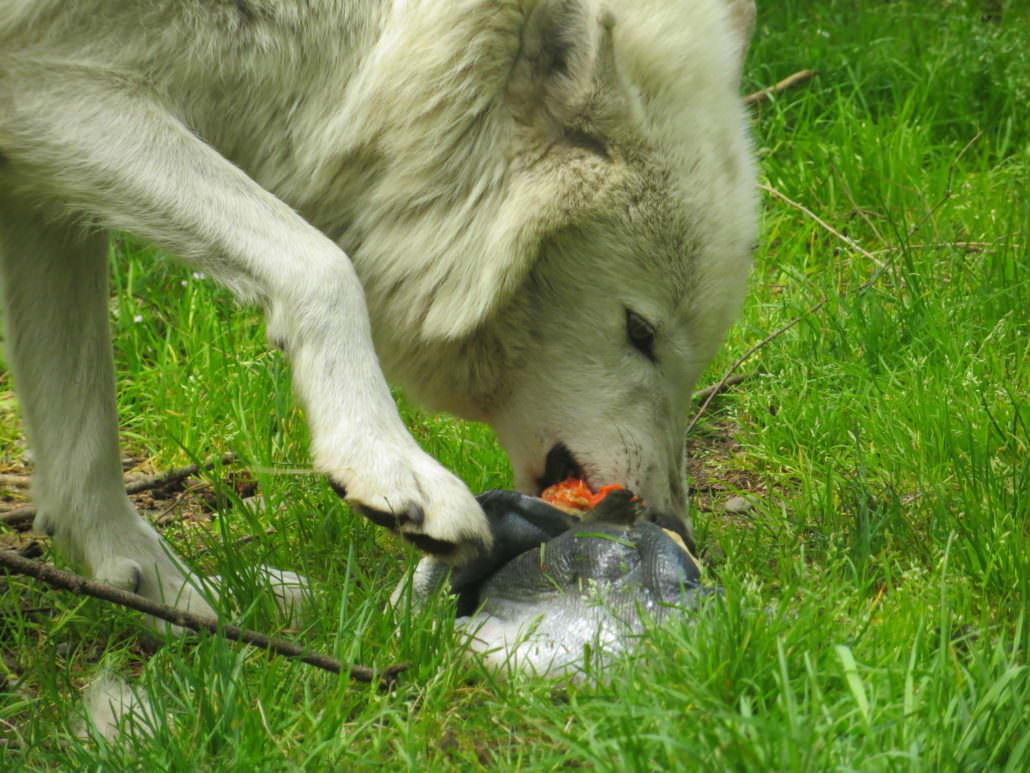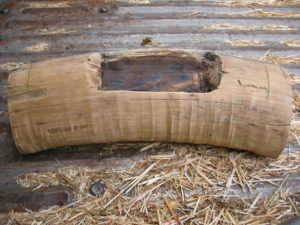Feeding the Wolves at Wolf Haven
Our Wolf Feeding Schedule
At Wolf Haven International, we have traditionally maintained a feeding schedule for the wolves that mimics a wild setting as much as possible. This means adjusting their diet to simulate a “feast or famine” style of eating. (In the wild, wolves generally succeed in hunting one out of ten times.) We accomplished this by maintaining our animals on a bi-weekly feeding schedule (with treats in-between).
We recently began modifying our feeding schedule. Rather than two regular feedings (as in the past), we now focus simply on 20 pounds of meat per wolf/per week. The number of feedings (usually 2-3) and the amount per feeding varies depending on what food we have available. The primary food sources are beef, chicken, and salmon. The salmon is donated to us from World Famous Pike Place Fish Market in Seattle. The wolves’ diet is still supplemented with marrow bones and turkey necks. In addition, we now get donated meat through our participation in the Sustainable Selections Program (meat donations from WalMart). This includes steaks, roast, ground beef, and other human grade food. This meat is usually divided up and frozen into a ‘loaf’ for each wolf.
Feeding Species Survival Plan (SSP) Wolves
Keep in mind the SSP animals (red wolves and Mexican gray wolves) are on a different diet: The SSP animals are fed kibble, with approved supplements (mainly roadkill). The reason the SSP animals are fed kibble is so ALL the facilities in the programs can maintain on the same diet. This removes the need for animals to get re-adjusted to a diet at a new facility if they get transferred. It also prevents potential pre-release animals from developing a taste for farm or ranch animals.
Erik Wilber, Animal Care Specialist


